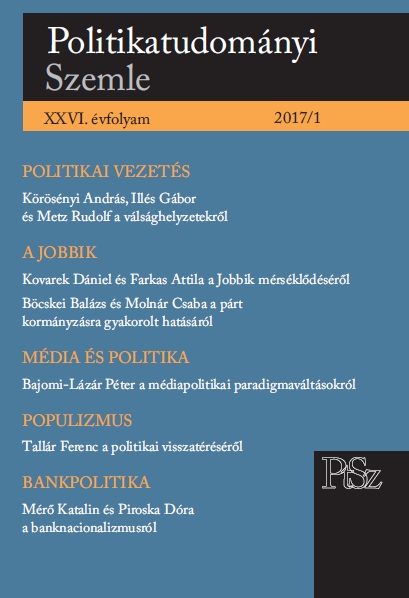Tekintélyelvűség és szabadelvűség között
Between authoritarianism and liberalism
Paradigm shifts in the relationship of Hungarian politics and media
Author(s): Péter Bajomi-LázárSubject(s): Politics / Political Sciences, Media studies, Political Sciences
Published by: MTA Politikai Tudományi Intézete
Keywords: media policy; freedom of the media; comparative study of the media
Summary/Abstract: According to Siebert et al. (1956/1963), media systems are of two basic types: authoritarian or liberal. Each country belongs to these categories, or represents a blend of the two. The present paper reviews the history of the relationship between Hungarian politics and media after the political transition of 1989–90, divides it into periods, and aims to place these periods on the axis of the authoritarian and liberal systems in the light of a set of criteria more suitable for the mapping of the relations of present-day political and media systems than the original, sixty-year-old model. Four periods have been identifi ed: those of the transition, the media war, the consolidation of the freedom of the press, and its deconsolidation; and these periods have been studied along four dimensions: media policy, control of the media, political communication, and ideological landscape. An attempt is also made to identify some reasons for the paradigm shifts in the relation of politics and media. Finally, it argues that the relapse of the freedom of Hungarian press experienced after 2010 diverges from regional trends. This divergence is explained by the particularity of the Hungarian constitutional system: the conjunction of the mixed election system, and the media law requiring constitutional majority.
Journal: Politikatudományi Szemle
- Issue Year: XXVI/2017
- Issue No: 1
- Page Range: 79-104
- Page Count: 26
- Language: Hungarian

